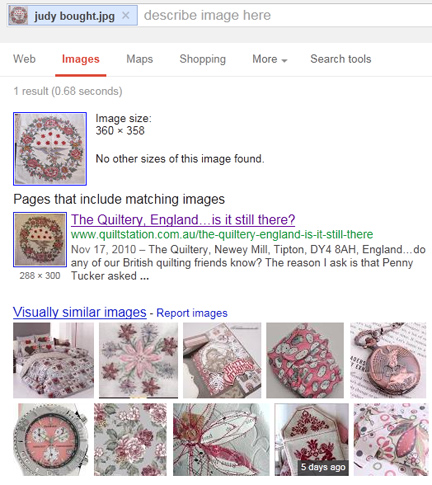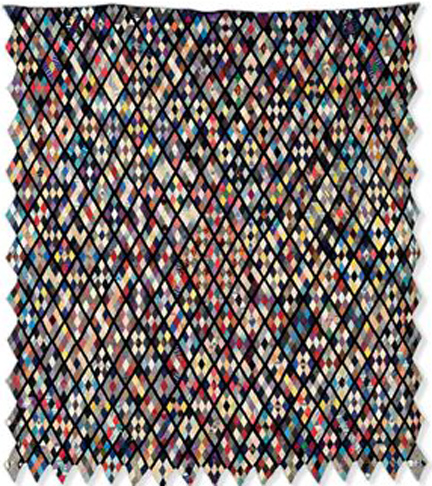Chintz border in rococo style print.
Chintz borders tend to date from before 1860
I've been posting about borders and how taste changed, which can provide some weak clues to an antique quilt's date.One clue from the section on borders in my book Clues in the Calico has to do with chintz borders. I wrote that the use of a floral chintz for an unpieced border was a good dating clue based on my database of 1,000 date-inscribed quilts.
Quilt date-inscribed 1839
Here's what I said:
"Chintz prints are typical of early quilts; conventional applique borders are more common after 1840. Of 35 quilts in the database with borders of large pieces of floral chintz 32 (91%) were dated between 1800 and 1860."
The earliest patchwork quilts in America and England often have chintz-scale furnishing prints as borders.
Here: a possible late-18th-century quilt is bordered with a striped toile, a single-color, copper-plate print that would hang over the bed.
Another T-shaped quilt with a toile border.
Knowing something about the popularity of the furnishing fabric's style helps narrow the date beyond "Before 1860." Toiles fell out of favor in the 1830s or so.
This star quilt from the Winterthur Museum's collection is made easier to date by the wide chintz border that features the palm trees and gamebird style print very popular in the 1820s and '30s.
Violet Alexander's cut-out chintz quilt in the Smithsonian's collection is dated 1830 and uses the same print for the applique with a striped chintz for the border.
Here the palm trees are again in the cut-out chintz.
The brown ground chintz is also a good clue to a date before 1840, although the Turkey red and white star would have been popular in the 1840s....a transition design perhaps.
A small quilt with a chintz border featuring a
fancy machine ground (fine pattern behind the florals)
The star quilts here all look like transition quilts, bridging the divide between the chintz quilt era when large-scale prints were fashionable and the calico quilt era when small scale prints were in vogue.
The emphasis in the blocks on primary colors in calicoes contrasts with the white ground chintz border.
In the 1840s American quilt style changed dramatically
but these chintz borders seem to lag a bit, joining two eras.
Another big change in the 1840s was the new fad for applique cut from calicoes, particularly in red and green. Above another transition quilt that probably dates from the 1840s.
If you love big pieces of great fabric you may regret the trend for calico borders. This large-scale Turkey red border would have seemed out-of-date by the 1850s when...
Something like this pieced border became more fashionable.
Another large-scale Turkey red border on a sampler that adds to the case for a date in the 1840s or early '50s for this Baltimore album quilt.
Quilters continued to use unpieced strips for their borders as in this quilt, probably from the 1880s, but calico was the way to go.
What about that 9% of the dated quilts AFTER 1860? More later.































































